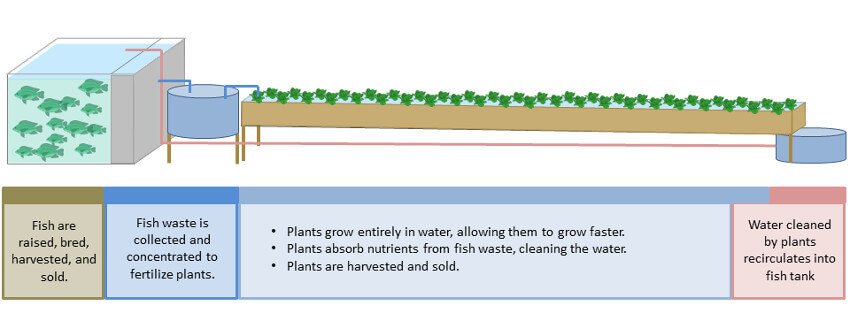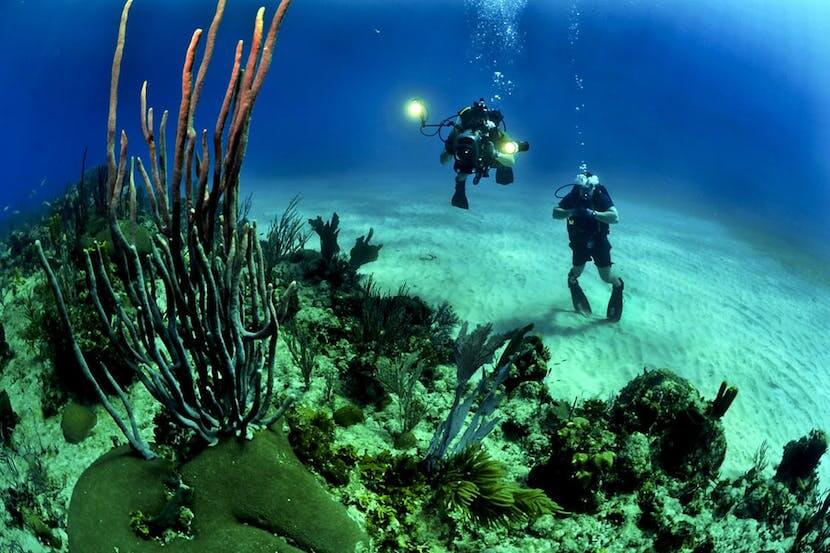Researchers at Armstrong State University have developed an aquaponics research facility that could serve as a model for economic and environmental sustainability.
Aquaponics, in short, is a way to grow fish and plants together in a self-sustaining system. It combines hydroponics, which is the growth of plants in water, with aquaculture, which is the raising of aquatic animals. It has the potential to create cheap and sustainable protein and vegetable sources to help fight hunger, without huge environmental ramifications.
The Foram Foundation teamed up with Armstrong State to create the Foram Sustainable Aquaponics Research Center (SARC). The facility currently is made up of 4 independent recirculating systems. Each system has a 900 gallon tank, capable of holding 100 tilapia and 224 square foot runways for plant growth.

According to Foram SARC’s web page, its mission is “conduct cutting-edge research, and to develop technologies and best practices that improve the sustainability and profitability of soilless farming techniques.” Dr. Heather Joesting, assistant professor of biology at Armstrong State and curator of Foram SARC, is collaborating with other researchers, including Dr. Brent Feske, director of Foram SARC, and Ashley Marranzino, assistant curator of Foram SARC, to fulfill the mission.
TUN spoke with Joesting to gain insight on the research. “Aquaponics has the potential to reduce food prices, especially for fresh fish and fresh produce, in areas where there is little space for farms, such as urban areas or rural areas or developing countries with poor conditions for agriculture,” said Joesting.
The team started a marketplace where they sell fresh fish and vegetables to the faculty and staff at Armstrong State to help fund further research. But, that is just the beginning. Joesting sees a great future for aquaponics, globally, and on Armstrong State’s campus. “At a larger scale, I think aquaponics has great potential,” said Joesting.
These systems can be designed to only take up a small amount of space while being rather self-sustaining, especially with the incorporation of alternative power sources.
Students at Armstrong State also play a large role in the development of aquaponics research. “We really try to make our facility a student-centered facility by including them in all aspects,” explained Joesting. “They do some basic maintenance jobs, such as feeding the fish, planting seeds, and harvesting plants, and they also assist in experimental design and data collection for research.”
Traditional aquaculture systems have been in place for a long time, but they leave a large footprint. “In fish production, tank water needs to be changed often to reduce the ammonia concentration because high concentrations can become toxic to fish,” explained Joesting. “For vegetable and herb production, even hydroponic production (i.e., roots directly in water, no soil), fertilizers, including nitrogen sources, are often added to production since nitrogen is generally limiting plant growth.”
Traditional aquaculture production also runs the risk of “introducing non-native fish and/or pathogens into the environment,” said Joesting. “With our system, since water is not released from the system, this is not an issue.”
Aquaponics researchers strive to shrink the environmental factors caused by aquaculture systems. “Our system is a closed-loop recirculating aquaculture system (RAS), which means there is no output of water into the environment, little requirement for additions of water to the system (only what is lost via evaporation), and no use of fertilizer for the plant growth, with the exception of iron additions,” explained Joesting.
Joesting and her team are far from finished with aquaponics research; they are still ironing out the wrinkles. Currently, they are working on minimizing costs. They are looking for alternative, clean, power sources and alternative food sources for fish, such as algae or duckweed.
Joesting and her team are taking every step they can to improve aquaponic studies. Through further research and development, aquaponics will aid in achieving the goal of economic and environmental sustainability, on a global scale.



